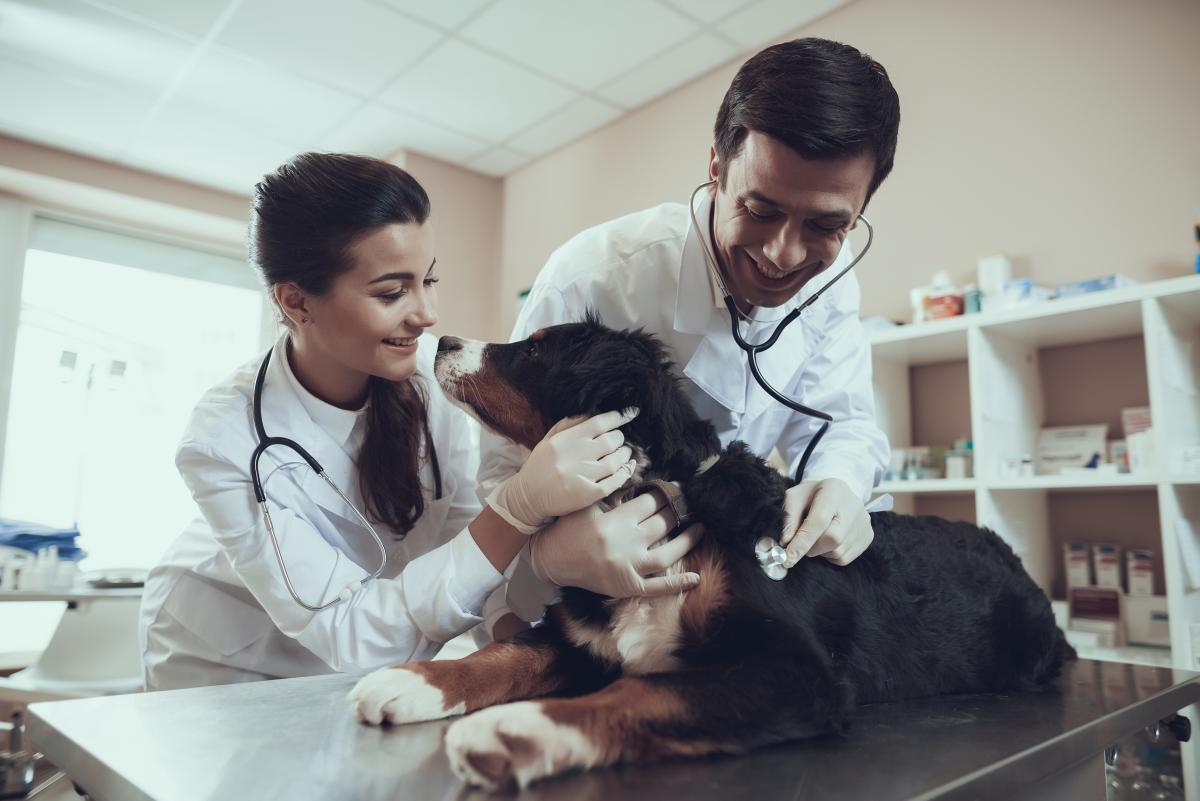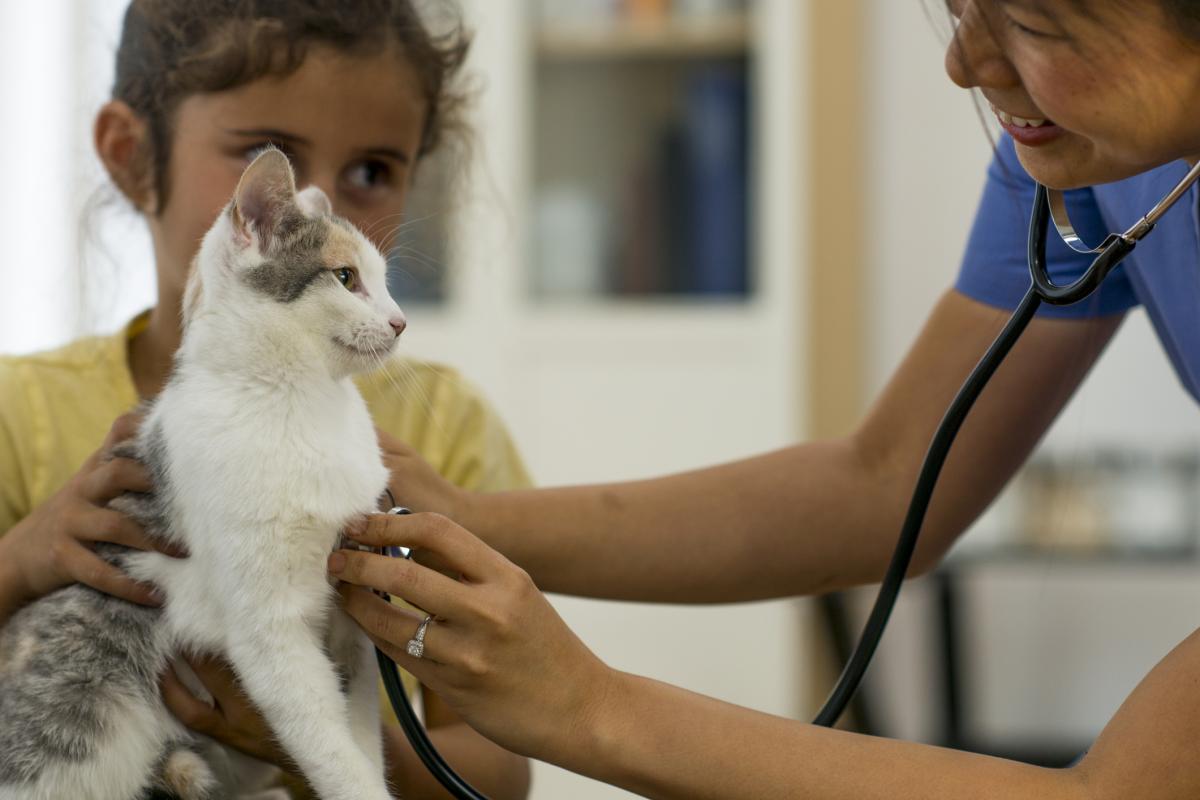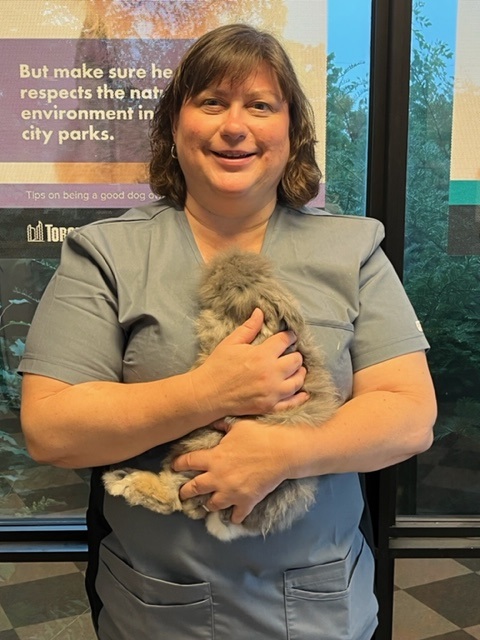Year over year, your pet’s annual wellness check tells a story
Regular veterinary care helps maintain your pet’s overall health—but just how important is that yearly physical exam when your pet’s health status seems unchanged?

While it may feel tempting to skip the annual exam if nothing seems off, research suggests regular physical exams each year help identify health problems early, improve relationships between pet owners and veterinary care teams and make owners feel more open to their veterinarian’s recommendations.
Dr. Judith da Costa, who completed her Masters of Science with Dr. Jason Coe, professor and VCA Canada Chair in Relationship-Centred Veterinary Medicine at the Ontario Veterinary College, focuses on standardizing annual veterinary physical exams and improving how veterinarians discuss the exam with clients.
“There’s a lot we don’t see that is important to our pets’ health, and it’s an animal’s instinct to hide it when they are unwell,” says da Costa. She notes 72 per cent of wellness appointments she studied, where the pet was assumed healthy, the veterinarian identified at least one medical concern during their physical exam that was previously undetected by the owner.
YES, THAT WAS THE EXAM
The physical exam is a central part of companion animal health care appointments, but when surveyed after their appointment, previous research out of the United States shows that many pet owners did not realize a physical exam took place. That may be because the veterinary physical exam may look to a pet owner like the veterinarian is simply showing the cat or dog some love.
“Sometimes both the veterinarian and client get distracted and start talking about other things, and the client isn’t necessarily aware of what the veterinarian is doing,” da Costa says. “In a physical exam, a veterinarian starts with the nose and works their way down to the tail—the entire patient is examined.”
During the exam, your veterinarian is diagnosing through touch —feeling for tumours, lymph nodes and swelling. They are checking pulse quality, evaluating mucous membrane colour and examining body condition to check if the pet is under or overweight. They do this by feeling various body parts and using instruments such as a stethoscope to listen to the heart, an ophthalmoscope to check eyes and an otoscope to check ears. Veterinarians also make comparisons such as comparing heart rate to pulse rate to check for “skipped beats.”
 PROBLEMS START EARLIER FOR OUR PETS
PROBLEMS START EARLIER FOR OUR PETS
Cats and dogs do not live as long as humans, and that means age-related problems develop sooner. Da Costa says health problems that may be more common in older people, such as kidney failure or thyroid disease, may come into play much earlier in the life of a dog or cat.
“If there’s a problem, it’s always better to address it early—that’s why the physical exam is so important,” says Coe. “It gives us the opportunity to pick things up. The sooner something is diagnosed, the better the outcome, in most cases.”
NORMAL IS A BASELINE
Every pet’s lifestyle is different, and pet owners have an important role to play in communicating what their pet’s living environment and typical day is like. Changes in routine are just as important to note.
“If a cat has a favourite spot they sleep in during the day, and now they’re hiding or not going to that spot, you should mention it,” says da Costa. “If a dog is waking up at a different time, or if they don’t bark at the thing they used to, or if there’s a change in their appetite, something may be going on.”
And, even if a pet’s behaviour, lifestyle and health status seem unchanged from last year, they should still be examined annually. Da Costa says normal status provides important baseline information to identify when something goes sideways.
 ASK YOUR QUESTIONS UP FRONT
ASK YOUR QUESTIONS UP FRONT
There is only so much time allocated for a veterinary appointment, so if you have a concern, do not wait for your veterinarian to bring it up. Da Costa suggests clients should write their concerns down before the appointment and raise them at the beginning.
“When your veterinarian is examining your pet, it’s a great time to focus on what they’re doing, and ask questions to become more involved,” says da Costa.
THE VALUE OF COMMUNICATION
Creating two-way open conversation is important when interacting with any healthcare provider. This is a shared responsibility of both the veterinarian and the pet owner. What if your veterinarian makes a recommendation that you are not comfortable with? “For example, if your veterinarian prescribes a pill for your cat twice a day and you know there’s no way that’s going to happen, you need to be up front about that and come up with a different solution together,” says da Costa.
She notes that by talking through a physical exam and focusing on the pet, both the client and the veterinarian have an opportunity in working together to create appropriate care plans and in understanding next steps.
“When veterinarians take the time to talk through the physical exam, the client has a better opportunity to understand the significance of the findings, and to understand why it may be important to intervene right away,” da Costa says. “The more pet owners understand the reason for examining each component of the physical and the impact of those findings, the more information they have about their pet’s health status and thus the better equipped pet owners are for making good treatment decisions, which likely results in better quality and quantity of life for their pet.”
 Dr. Judith da Costa (pictured) is currently the Chief Veterinarian at Toronto Animal Services, Municipal Licensing and Standards at the City of Toronto. Da Costa completed her research with Dr. Jason Coe, professor and the VCA Canada Chair in Relationship-Centred Veterinary Medicine.
Dr. Judith da Costa (pictured) is currently the Chief Veterinarian at Toronto Animal Services, Municipal Licensing and Standards at the City of Toronto. Da Costa completed her research with Dr. Jason Coe, professor and the VCA Canada Chair in Relationship-Centred Veterinary Medicine.
Learn more about the team’s research:
Veterinarians’ use of the Talking Physical Exam as a communication tool and
Twenty-five components of a baseline, best-practice companion animal physical exam established by a panel of experts.
This story originally appeared in the fall 2022 / winter 2023 issue of OVC Pet Trust's Best Friends Magazine. Join our community and subscribe to the pet magazine of the Ontario Veterinary College.

